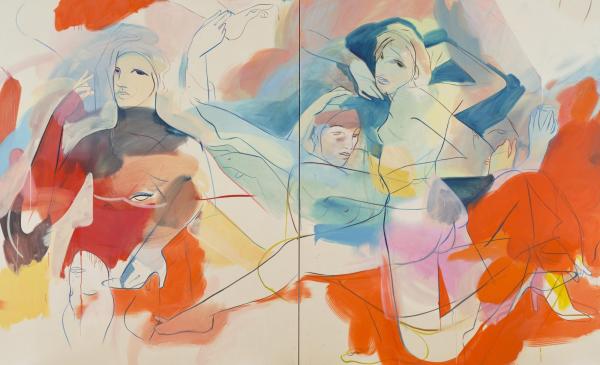During the depths of the nationwide COVID-19 lockdown, in May 2020, there was a welcome note of cheer at the National Galleries of Scotland: we had secured the funding to buy this rare and stunning painting by the Welsh artist Gwen John (1876–1939).

The painting had been on loan to us from a private collection for nearly twenty years. Thanks to the owner’s help and patience, it now joins the collection and will remain on our walls. And a massive ‘THANK YOU’ to Art Fund and the Henry and Sula Walton Fund. They both helped with the purchase in a major way.
Portrait of a Girl in Grey is one of a series of four similar paintings of a woman in a grey-blue cloak looking out to the left. The other three versions are in museums in North America. One version belongs to the Yale Centre for British Art in New Haven, another to the Albright Knox Art Gallery in Buffalo, New York State, and another is in the National Gallery of Canada in Ottawa. Ours was the last version in private hands.
Gwen John finished less than 150 paintings and most of them are now in museum collections. They hardly ever come up for sale. They mainly show anonymous women seated quietly indoors, staring out into empty space, their hands often clasped. The sitter in our picture is unknown, although she appeared in many of Gwen John’s paintings. You can feel the intensity of the artist's gaze. Another sitter who posed for John reported that: 'She cannot endure having the pose changed by a hair's breadth once she has arranged it.'
John’s great achievement is to have made nuanced portraits which are at once sensitive and delicate and suggest something of the guarded vulnerability of the sitter, yet at the same time display strength, focus and intensity. Like no other British artist of her generation, she managed to suggest the private state of mind of her subjects - but like a private mind, its character, complexity and depth are hard to gauge. No wonder her work is so often reproduced on the covers of novels.
The woman holds a rosary loosely in her fingers, but otherwise the artist gives nothing away in terms of narrative, facial or bodily expression, location or even title. She suggests thought – both the artist’s and the sitter's - through technique. Look at it closely and you can see the very fine canvas weave showing through. Her application of paint is what our conservator memorably referred to as 'mean'. What she meant is that the paint isn't thick or layered, but carefully, cautiously and thinly applied. It's dry and chalky, put on in little dabs. More like finger marks than brushstrokes. There are tiny shifts in tone. Every mark looks like a carefully calibrated decision, mapping thought. It's all done with breathtaking subtlety.

